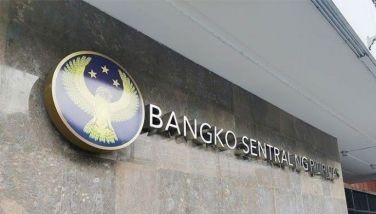Peso appreciation and the economy (once again)

In the last week, the peso broke a new barrier, at 40 pesos to the dollar. The last time that I wrote on the peso’s strengthening (Aug. 22, 2012), the exchange rate was 42.42 pesos to the dollar. The exchange rate of 42 to 45 pesos to the dollar would seem a desirable range of fluctuation in view of current conditions and other factors that prevail in the economy. On Jan. 12, 2011, the peso dollar rate stood at was 44.3 pesos.
In a paper I recently wrote at the UP School of Economics. I examined the peso appreciation compared with the currencies of other high-performing East Asian neighbors such as Thailand, Indonesia and South Korea just to find that the peso exchange rate has appreciated the most among these countries. With respect to China, the peso’s appreciation rate closely resembles the extent of China’s currency. But Philippine growth record is a far cry from China’s.
The peso appreciation is unjustifiable from the viewpoint of the economy’s high unemployment and poverty situation. The outcome is not founded on market fundamentals but on aberrations arising from the bounty that we experience from recent positive economic news and continued high level of remittances. In respect to the country’s unemployment situation and the high incidence of poverty, the exchange rate is over-valued.
“Dangerous implications on the economy.” It is useful to summarize some danger points that must be borne in mind.
1. The peso appreciation makes imports and foreign travel cheaper, but exports and tourism within the country become relatively more expensive to foreigners. This encourages us to buy imports while on the other hand, foreigners find our exports more costly than the produce of other competitors. This has serious implications on jobs in the country.
2. With about one-fourth of the labor force either underemployed or unemployed and with a high incidence of absolute poverty as a consequence (despite the report that unemployment is at eight percent of the labor force), the peso appreciation aggravates rather than offers relief to our problems of unemployment and underemployment.
3. In other specific terms, the appreciation reduces the income received from remittances and from export services we provide to foreigners when converted into pesos. This adversely affects the incomes of OFWs who send their remittances home, exporters, BPO services providers who earn dollar revenues.
4. If it does so to existing industries, the appreciating peso does worse by preventing new industries from getting established here to generate additional employment of Philippine labor. I especially refer to industries that are likely to earn export revenues for the country.
5. The appreciation of the peso gives a false sense of comfort to those who think we are now doing well compared to before. We are not like China and some countries that have attained substantial reduction of their poverty problem.
I could add more to this list but these should be sufficient warnings about the implications.
“Is there government complacency?” A false celebratory, but perhaps resigned, mood in the government might be demonstrated by a careless analysis of the peso appreciation attributed to Secretary of Trade and Industry Gregory Domingo.
He says that the strengthening of the peso is difficult to stop because the government does not have enough resources to control the volatility of the peso. Further, he seems to imply that at the parity of 39 pesos to the dollar, the economy would survive but export industries would suffer.
This is a callous statement. When the exchange rate was above 42 pesos to the dollar, Secretary Domingo was quoted to have said that Philippine enterprises should prepare for continued peso appreciation. What he should have said then was to warn about the consequences of the appreciation on the future expansion of his constituency – domestic industry which includes exporters – to be internationally viable.
Luckily, the NEDA through Secretary Arsenio Balisacan has warned that the current peso appreciation is an unhelpful development in the government’s effort to promote more industries, to create more employment and to reduce poverty. The NEDA can make helpful statements for guidance on policy directions but the rest of the government ought to act together in achieving those directions.
Government agencies that directly undertake the nitty gritty of operations that have a bearing on peso exchange rate movements must coordinate their actions efficiently.
“Need for fiscal-monetary coordination.” The actions currently being taken, foremost among which are the monetary measures that the BSP is utilizing appear inadequate to stem the tide of appreciation without proper coordination with the fiscal authorities.
The BSP can only do so much in this situation. Both the monetary and fiscal authorities must act together so that the extra dollar inflows with large impact on the money supply can be effectively sterilized out of circulation.
For instance, the monetary authority has been incurring enormous losses supporting the peso exchange rate to sterilize large inflows of dollars. Some of these losses need not be incurred with a more effective coordination of monetary moves with the fiscal requirements of the national government in relation to its finance of the domestic debt and the servicing of the external public debt.
There are sufficient domestic peso funds that can be mobilized to finance the government expenditure needs beyond tax revenues. Mechanisms are available that can finance infrastructure investments and other government spending when monetary instruments are matched against Treasury requirements so that liquidity arising from dollar inflows can match government needs.
There is also ample room to absorb the excess dollar accumulation of the monetary authorities so that the government can use the option of relying more on that resource. This can be done in the domestic market for government debt as well as for the management of the external public debt. There is also ample room for external debt reduction because the system is flush with funds. Retiring more costly debt as well as pre-paying some old debt becomes more possible now.
Such mechanisms were not used sufficiently in the past, especially in the last two years. Lately, however, the monetary and fiscal authorities can imaginatively avail of them and expand their potentials.
The fiscal authorities, thanks to the effort of Finance Secretary Purisima, have done well in stabilizing the budget and in attempting to raise revenues as well as containing the total government expenditure. For his success in this area, the country has been receiving positive news internationally and he has also received the proper kudos.
However, there are specific actions that can achieve the same objectives of the fiscal authorities and, at the same time, help to stabilize the peso rate. The fiscal authorities could utilize some of the dollar inflows to minimize their domestic monetary impact by providing direct demand for them through their normal fiscal operations.
Reference: G.P. Sicat, “Peso appreciation and monetary-fiscal coordination,” Discussion Paper 20-15, October, 2012, University of the Philippines School of Economics….
My email is: [email protected]. Visit this site for more information, feedback and commentary: http://econ.upd.edu.ph/gpsicat/
- Latest
- Trending

























